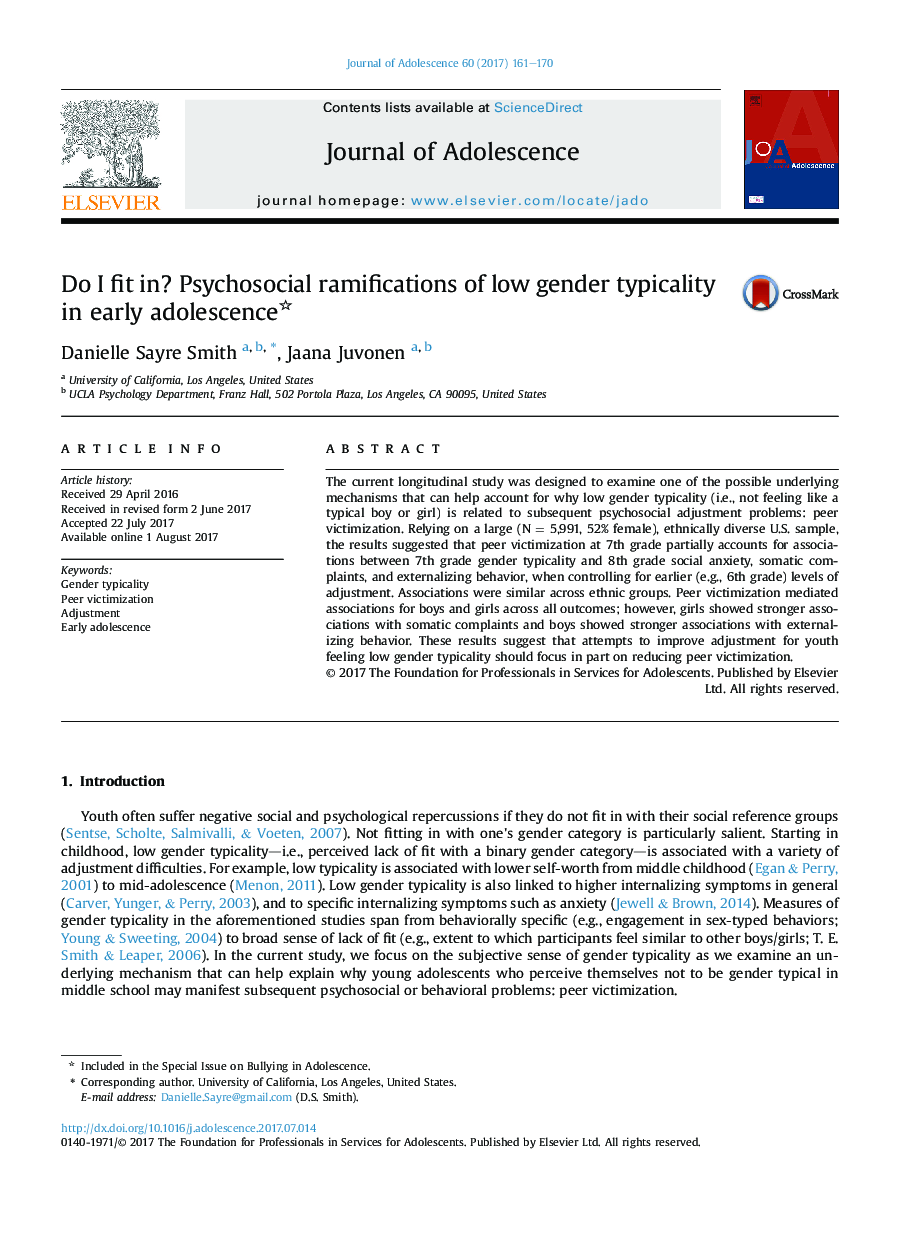| Article ID | Journal | Published Year | Pages | File Type |
|---|---|---|---|---|
| 5033818 | Journal of Adolescence | 2017 | 10 Pages |
The current longitudinal study was designed to examine one of the possible underlying mechanisms that can help account for why low gender typicality (i.e., not feeling like a typical boy or girl) is related to subsequent psychosocial adjustment problems: peer victimization. Relying on a large (NÂ =Â 5,991, 52% female), ethnically diverse U.S. sample, the results suggested that peer victimization at 7th grade partially accounts for associations between 7th grade gender typicality and 8th grade social anxiety, somatic complaints, and externalizing behavior, when controlling for earlier (e.g., 6th grade) levels of adjustment. Associations were similar across ethnic groups. Peer victimization mediated associations for boys and girls across all outcomes; however, girls showed stronger associations with somatic complaints and boys showed stronger associations with externalizing behavior. These results suggest that attempts to improve adjustment for youth feeling low gender typicality should focus in part on reducing peer victimization.
